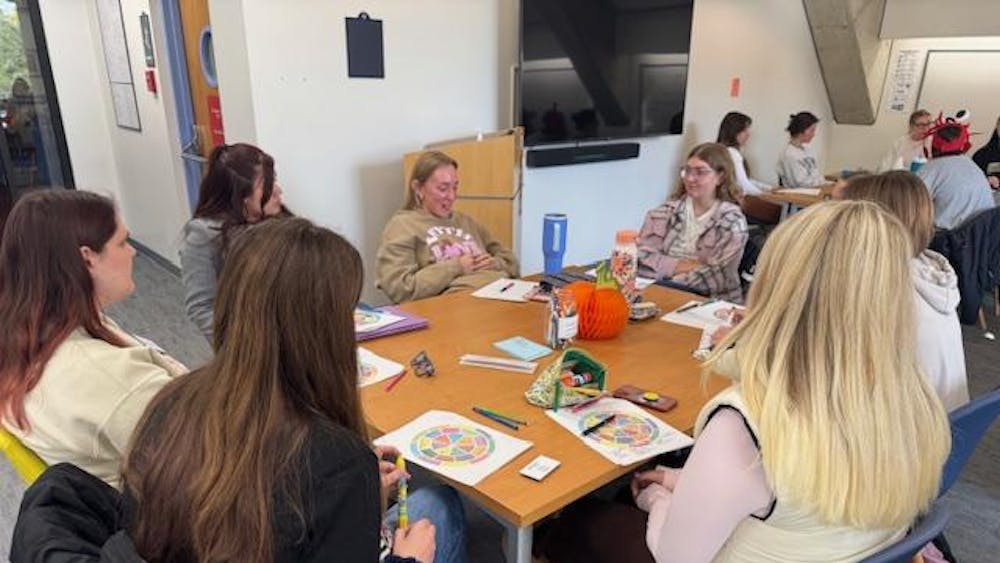
Dr. Thomas Südhof, the 2013 winner of the Nobel Prize in Physiology or Medicine, accepted the 2023 Rev. Joseph Carrier Science Medal, the most distinguished award given by the College of Science, on Monday night in Dahnke Ballroom.
“The Reverend Carrier Medal ... represents the pinnacle of scientific excellence, achieved during years of a career dedicated to discerning the answers the universe has to offer,” University provost John McGreevy said.
McGreevy explained that Südhof's research involves the discovery of the machine regulating vesicle traffic, which is the major transport system in human cells
As molecules move around in cells, they are grouped together in vesicles, which move the molecules within and outside the cell, McGreevy said.
McGreevy awarded the Carrier Medal to Südhof, who discussed the cellular biology underlying Alzheimer’s Disease.
“[The brain] is enormously complex," Südhof said. "The abilities of the human brain — the kinds of calculations of memories of thoughts, of feelings, of actions are incredible.”
Südhof noted the main symptoms begin as short-term memory loss and then progress into loss of all brain function.
“Losing our memories is the worst thing that can happen to a person,” he said.
Südhof pointed to the commonality of Alzheimer’s Disease in Americans over the age of 65 years old. Eleven percent of Americans above the age of 65 have the disease, and as the population grows older, the rate “dramatically” increases. Südhof noted that since women tend to live longer, there is a slightly higher rate of diagnosis due to a larger population compared to men.
Discussing the biology of Alzheimer’s, Südhof said nerve cells, or neurons, die, and as a result, the brain’s ventricles (fluid-containing cavities) enlarge.
To further examine Alzheimer’s, Südhof explained that three physical commonalities in cases are neurofibrillary tangles, amyloid plaques and inflammatory reactions.
Genetic mutations are the core of understanding Alzheimer’s, Südhof said. He discussed findings from both his lab at Stanford University and colleagues, which primarily analyzed mutations among several commonly mutated genes identified to be prevalent in Alzheimer’s symptoms.
Südhof concluded that the field has a lot to explore, and current findings are crucial to the development of potential drugs that could be administered to slow the progression of Alzheimer’s.
Nobel Laureate Thomas Südhof accepts Carrier Science Medal
2013 Nobel Laureate Dr. Thomas Südhof gave a keynote presentation focusing on vesicle transportation in nerve cells in relation to Alzheimer's Disease.









